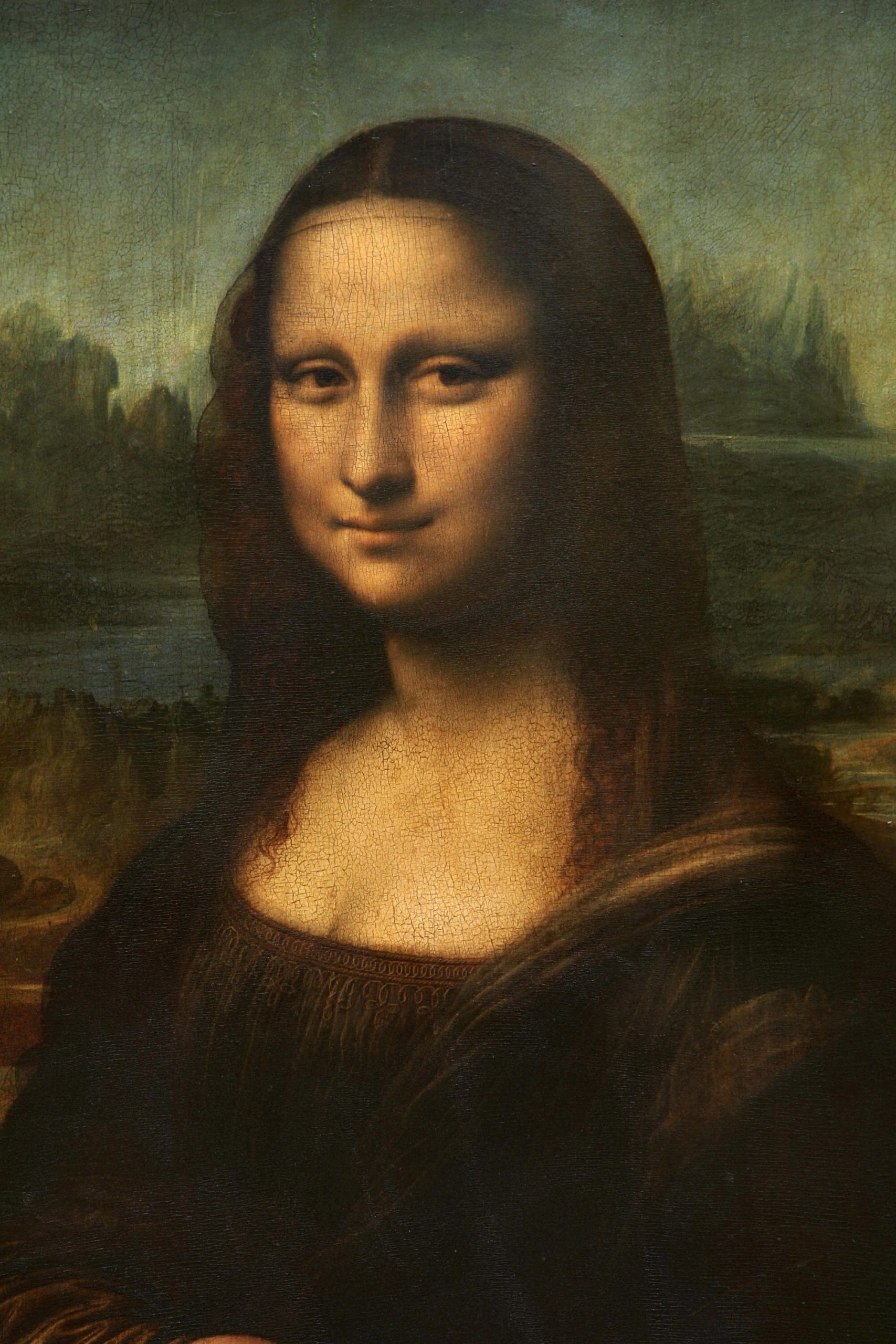
Do you smile to tempt a lover, Mona Lisa?
Or is this your way to hide a broken heart?
–“Mona Lisa” sung by Nat King Cole
The world’s most famous painting has been stolen, damaged, hidden and exhibited since Leonardo da Vinci finished “Mona Lisa” before his death in 1519. “Whimsy” columnist CLIVE WILLIAMS takes a closer look.
SINCE watching “Glass Onion”, a “Knives Out” mystery on Netflix, I have become more interested in the “Mona Lisa”, so I had a look at the background to the world’s most famous and valuable painting.

While its value is hard to calculate, a ballpark figure would be around $US900 million. It’s housed in the Louvre Museum in Paris and is one of the museum’s most visited artworks.
The “Mona Lisa” is painted in oil on a poplar wood panel, and is relatively small in size, measuring just 50 by 76 centimetres.
It was painted by the Italian genius Leonardo da Vinci. The subject is believed to be Lisa del Giocondo, wife of Francesco di Bartolomeo del Giocondo, a wealthy Italian merchant.
Leonardo da Vinci began painting the “Mona Lisa” in about 1503, and it was in his studio when he died in 1519. He had worked on it intermittently over several years, adding multiple layers of thin oil glazes at different times.
Small cracks in the paint, called craquelure, appear throughout the whole piece, but they are finer on the hands, where the thinner glazes correspond to Leonardo’s late period.
Leonardo spent the last years of his life at the court of the French King Francis I. The king acquired the work after the artist’s death, and it became part of the royal collection.
For centuries the portrait was secluded in French palaces, until revolutionaries claimed the royal collection as the property of the people during the French Revolution of 1787–99. Following a period hanging in Napoleon’s bedroom, the “Mona Lisa” was installed in the Louvre Museum at the turn of the 19th century.
Some art historians believe the “Mona Lisa’s” smile represents the mysterious nature of womanhood, while others see it as a symbol of Leonardo’s own enigmatic personality. Some have suggested that the smile represents the sitter’s inner thoughts and feelings, others possibly what she had for breakfast.

In 1911, the painting was stolen from the Louvre by Italian handyman Vincenzo Peruggia. He and two others stowed themselves away in a closet of the Louvre, waited until the museum closed, then escaped with the painting on a train out of Paris.
A little over two years later, Peruggia tried to sell the work to a dealer in Florence. The dealer called the director of the Uffizi Galleries, who obtained the work and called the police. Peruggia spent six months in prison. The painting was returned to the Louvre.
During World War II, the “Mona Lisa” was removed from the Louvre and hidden to prevent the Nazi art theft division from stealing it. The painting officially resurfaced on June 16, 1945.
Since then, there have been several unsuccessful attempts to vandalise the “Mona Lisa”. In 1956, the painting was attacked twice. First, an unnamed vandal attempted to take a razor blade to the painting. Then, a Bolivian man, Hugo Villegas, tossed a rock at the painting.
In 1974 the “Mona Lisa” was on show at the National Museum in Tokyo when a 25-year-old Japanese woman, Tomoko Yonezu, tried to spray it with red paint. In 2009, a Russian woman went to the Louvre and smashed a teacup against the painting. In 2022, the “Mona Lisa” was smeared with cake in what seems to have been a protest against climate change.
The “Mona Lisa” has been protected by heavy-duty glass since the 1950s. In 2019 the glass was upgraded to bulletproof glass.
Leonardo da Vinci and his students painted at least four different versions of the “Mona Lisa”; the most famous being the Louvre version. The others are at the Prado Museum and in private collections.
On a lighter note. Galileo, Leonardo da Vinci and Marco Polo are walking in heaven and decide to have a conversation with Jesus.
Galileo says: “Jesus, I’ve been thinking about my past life on Earth, and want to know what I’m remembered for all these years later.”
Jesus pauses and replies: “Galileo, you are remembered as the father of modern physics.”
Galileo smiles with joy and walks away. Leonardo, intrigued, asks the same question. Jesus pauses and replies: “Your paintings of the ‘Mona Lisa’ and ‘The Last Supper’ are considered to be the most miraculous works of art of all time.”
Leonardo walks away gratified. By this stage, Marco Polo can’t contain himself and eagerly asks the same question. Jesus thinks hard and says: “Okay, so a bunch of kids get into a swimming pool…”
Clive Williams is a Canberra columnist.
Who can be trusted?
In a world of spin and confusion, there’s never been a more important time to support independent journalism in Canberra.
If you trust our work online and want to enforce the power of independent voices, I invite you to make a small contribution.
Every dollar of support is invested back into our journalism to help keep citynews.com.au strong and free.
Thank you,
Ian Meikle, editor









Leave a Reply